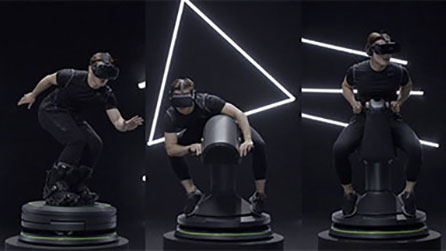We’re really excited by the potential of the latest developments in Virtual Reality. As an agency, our core purpose is to change behaviour and it’s becoming increasingly evident that we have a profound ability to achieve this by using VR to craft immersive virtual experiences.
There are clear signs that the VR industry is set to significantly evolve over the next few years. Both in terms of available and affordable technology used to deliver experiences and (maybe more importantly) with the increased volume and diverse range of virtual applications, immersive content channels and experiences that will be created. Global annual sales of VR Headsets are predicted to reach 13.7 million units in 2017 increasing to 30.1 by 2018.
The recent VRWC 2017 expo and associated talks provided us with a valuable opportunity to discuss and evaluate the unique possibilities that VR provides, helping to increase our awareness, knowledge and understanding. We met with developers, companies and lots of like-minded people who are looking to explore new and meaningful uses for virtual, augmented and mixed reality solutions.
So, looking forward to the rest of 2017 and beyond, here are a few thoughts and observations:
Have we been here before?
The promises, excitement and anticipation that a virtual world is within reach but each time previously the technology or level of immersion has simply failed to deliver and ultimately disappointed.
What’s different this time? 2016 was touted as the year VR would take off, it didn’t quite happen but solid foundations were laid. The release of HTC Vive and Oculus Rift headsets provided a true (but expensive) 360° VR experience – room scale environments that track users as they walk and interact with virtual content using handheld motion controllers. Sony released the PSVR with relatively strong sales, which helped provide an affordable games console VR experience for PS4 users. And more recently big brand mobile headsets such as Gear VR and Google Daydream are giving greater numbers a taste (albeit limited) of what’s possible within VR. Many more people have also encountered VR through their mobile devices using a cardboard headset in the form of 360° videos or simple point and click VR applications – whilst strictly not seen as proper/real VR in its true sense, it is for many their first ‘VR’ experience and an important one at that.
VR awareness is rising
Adoption rates in the UK are currently in the region of nine per cent (those who have tried VR), adoption within Asia is huge and this serves as a good indicator as to how and where VR usage will increase for the mainstream.
The current setup costs associated with the high-end VR platforms have interestingly led to VR arcades, popups and shopping mall experiences becoming common place in Asia and are now starting to appear in the US and Europe. This is giving people the opportunity to pay to play on VR with access to cutting edge technology with the latest and best content available at a low cost. Expect to see the appearance of location based VR spaces on the increase – they’re very likely the way forward until home units become more affordable.
VR content distribution platforms
The likes of Jaunt and Within are appearing and provide VR audiences and the content creators an important ecosystem. Broadcasters, such as Sky Sports, are using mobile VR apps to place their audience in the heart of the action, giving them the opportunity to experience unique (and previously unseen) 360° views such as from the ringside of a world heavyweight title fight, or being out on the road with Team Sky cycling team during their training sessions.
Within the film industry
We’re increasingly seeing VR being used to create unique movie related content that’s typically not part of the actual movie, but an expansion of the narrative, idea or world. Google Daydream users could visit J.K. Rowling’s magical world (see video) and enter Newt Scamander’s suitcase, cast virtual spells using a hand controller ‘wand’ and meet some of the fantastic beasts face to face and up close! More recently Ghost in the Shell created an immersive movie experience for Oculus Rift, Samsung Gear VR & Facebook 360 users, each version tailored to provide the best experience possible each platform.
Social is evolving
There’s significant investment and positioning from the major players. Related technologies such as 360° cameras are also influencing behaviour, enabling users to broadcast live 360° videos to others via Facebook, YouTube and beyond. Social VR is being touted as the next big thing and it’s easy to see why.
Adoption of VR across business
VR is going to be a game changer spanning all sectors and industries, providing business and end-users with innovative solutions and connectivity. We’re seeing it in education and entertainment but this is just the start. VR empowers users to be able to interact with environments and objects in ways that aren’t possible in the real world – working at a micro or macro level of scale, learning and refining new skills in the safety of a virtual environment, storing analytical data and helping insight and understanding of how things and people work.
There are remarkable opportunities ahead of us as we are learning how to use and work with VR. During his keynote at VRWC, AMD’s Corporate Vice President of Alliances, Roy Taylor said: “It’s time to reimagine the Z”. And he’s right – we need to push the boundaries, experiment, innovate and discover.
At onebite, we’ve delivered several projects using WebVR and like everyone, it’s very much about learning at this stage. The VR industry is in its infancy but the willingness to share, collaborate and spread insight and knowledge with others in the VR community (and beyond) will have a big impact on its success. We have a real sense of anticipation that we’re on the verge of something special and that this time it is going to happen.





